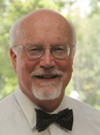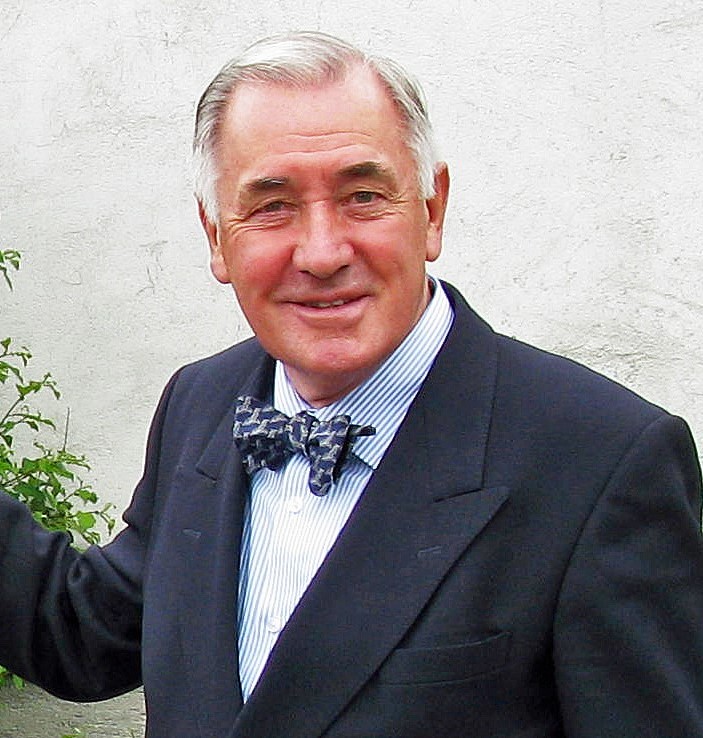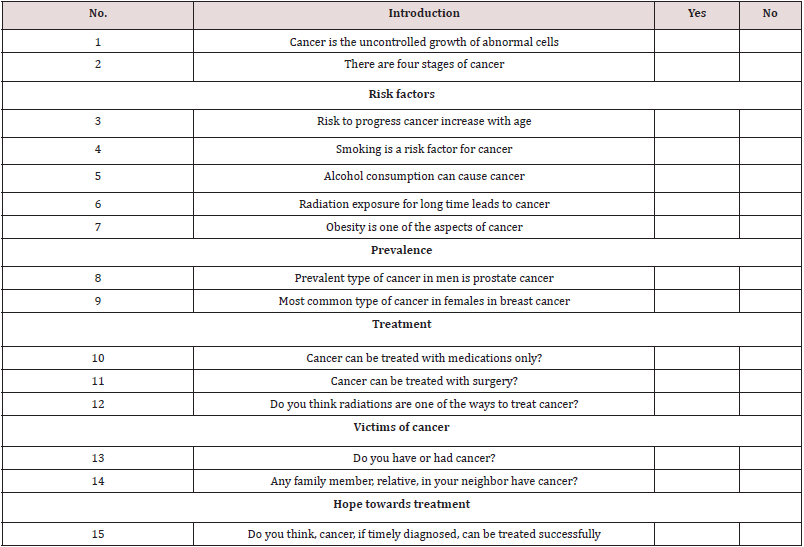
Lupine Publishers Group
Lupine Publishers
Menu
ISSN: 2637-6679
Review Article(ISSN: 2637-6679) 
Cancer Awareness among the Students of Baha Ud din Zakariya University Multan, Pakistan Volume 6 - Issue 4
Muhammad Furqan Shah1*, Muhammad Muzamil Nazar2, Aleena Zainab3
- 1COMSATS University Islamabad, Pakistan
- 2Baha ud din Zakariya University Multan, Pakistan
- 3NUST Islamabad, Pakistan
Received: October 06, 2021 Published: October 27, 2021
Corresponding author: Muhammad Furqan Shah, MS Molecular Genetics, COMSATS University, Islamabad, Pakistan
DOI: 10.32474/RRHOAJ.2021.06.000249
Abstract
Uncontrolled division and proliferation of abnormal cells is called cancer. It is the second most common disorder after cardiovascular diseases. Common symptoms of cancer include extreme tiredness, weight loss, fever, pain, headache, eating problems and lumps or swelling on the body. Age, obesity, alcohol consumptions, smoking and radiations are one of the major risk factors for cancer. A survey was conducted to check the awareness level about cancer among the students of different departments of Baha ud din Zakariya University, Multan. A questionnaire consisting of 15 basic questions about cancer was designed. Total 500 students fill the questionnaire. The results of the survey show the awareness among university students. 69.2% students were aware of the risk factors of cancer, 63.25% students were aware about the most prevalent type of cancer in males and females, 87.66% students were aware of the different modes of treatment and 79.25% students were hopeful that cancer can be treated successfully. In our study, only 1% students have remained cancer patients, 3% students have relatives with cancer and 5% students’ neighbors were affected by this lethal disease. Awareness about cancer in students is not too good, therefore, there is a need to spread awareness among students by conducting seminars and diagnostic camps.
Keywords: Awareness; Survey; Cancer; Questionnaire; Students
Introduction
Cancer is the uncontrolled division of abnormal cells [1]. It is a lethal disease, if untreated leads to death [2]. Cancer occurs in two forms; either Benign or Malignant. Benign is a noncancerous localized mass of abnormal cells, which do not spread to other place in the body. Malignancy is a true cancerous condition in which cancerous cells spreads to other parts of the body from its place of origin. This process is called Metastasis [3]. Majorly types of cancer are; Carcinoma (is the cancer of epithelial cells or of the lining of internal organs), Sarcoma (is the cancer of soft tissues and bones), Lymphoma (is the cancer of lymph nodes or lymphocytes) and Leukemia (is the cancer of blood) [4]. Cancer can be treated through Chemotherapy (by using anti- cancerous drugs), Radiotherapy (usage of high doses of radiations to kill cancerous cells) and surgery (removal of cancerous cells or affected organ part) [5]. Cancer is also considered as hereditary disorder because it can also be transferred to next generations through defected genes from parents [6]. Death rate due to cancer is the second highest rate of death after cardiovascular disorders throughout the world [7]. Most common types of cancer among males and females are prostate and breast cancer respectively [8]. Lungs cancer is the most common type of cancer in males and females [9]. Cancer, if timely diagnosed can be treated successfully [10]. As in other parts of the world, cancer is also a major disease in Pakistan. Mostly it could not be diagnosed due to unawareness of people. Most of the people are unaware about this lethal disease and don not even know about the basics of cancer. Therefore, to check out the awareness about cancer in people, especially among the students of Baha ud din Zakariya University Multan, a survey was conducted about the basics of cancer. The purpose of this survey was to check out the awareness level about cancer among university students.
Methodology
A questionnaire about the basics of cancer was designed. It was consisted of 15 basic questions (Table 1). Questions were mainly consisted of the basics of cancer, its risk factors, prevalence, victims and hope towards the treatment. Decision was made to cover Biological (including Zoology, Botany, Biotechnology, Biochemistry, Microbiology and D-Pharm), arts, business, agricultural, engineering and Information technology departments. Selection of these departments was made on the basis that level of awareness about cancer among the students of different departments could be obtained. From each given department 50 students were selected; 25 males and 25 females. The inclusion criteria was to select only the students of Baha ud Din Zakariya University and exclusion criteria was not to take any student other than the mentioned university. In this way, total 500 students took part in this survey from these given departments. Survey was taken from males and females in equal ratio so that clear image about knowledge of cancer between these two genders could be obtain. Questions that were included in the questionnaire, are as follows.
Results
Results were taken from the students and calculated in the form of percentage. Table 2 consist of the response and understanding of students about the risk factors of cancer. Risk to progress cancer increase with age? 19% of the males said that yes age is a risk factor for cancer while 81% said there is no association between age and cancer. In females’ side, 27% of females answered yes and 73% of them answered no. Smoking is a risk factor for cancer? In case of males, 84% of them answered yes and 16% said no. In case of females, results were slightly differed. 87% of females answered yes to this question while 13% answered no. Alcohol consumption can cause cancer? As male side is more inclined towards alcohol consumption, therefore majority of the male side i-e 91% answered yes while 9% said that alcohol consumption did not cause cancer. In females, 70% of them answered yes and 30% No to this question. Radiation exposure for long time lead to cancer? People are aware that radiations are dangerous and causes serious health hazards therefore most of the males and females i-e 88% males and 90% females answered yes to this question. In other case, 12% males and 10% females answered no. The last question about the risk factors of cancer was, obesity is one of the aspects of cancer? 65% of the males answered that obesity is one of the aspects of cancer while 35% answered obesity is not the aspect of cancer. In females, 71% answered yes and 29% answered No to this question. In this way total awareness of this section was 69.2%. The results about the prevalent type of cancer in males and females are given in the Table 3.
Prevalent type of cancer in males is prostate cancer? The results
of this question were very disappointed. 33% of males answered yes
while 67% of them answered no. In case of females, 25% answered
yes and 75% answered no. Both sides were not well aware to this
question. The students from biological sciences were aware that
which prevalent type of cancer in males while the students from
other areas have not even familiar with the name of prostate cancer.
While, the results about the second question were totally opposite.
Most common type of cancer in females in breast cancer? 95% of
the males answered yes to this question and 5% answered No to
this question. 100% of the females who solved this questionnaire
answered yes to this question, while no one answered No to this
question. Hence, 63.25% was the total awareness of this section.
Next questions were about the possible treatments for cancer.
The results of these questions are given in the Table 4. Cancer can
be treated with medication only? In male category, 94% of the
males answered yes to this question and only 6% answered no. In
female category, 97% of them answered yes while 3% answered
No to this question. Second question was, cancer can be treated
with surgery? All the participants who took part in this survey
answered yes to this question. The last question of this section was,
do you think radiations are the way to treat cancer? Results of this
question were average because students were not well aware that
radiations can be used for the treatment of cancer. 61% of males
and 74% of females answered yes while 39% of males and 26% of
females answered No to this question. So, 87.66% of total students
were aware about the different treatment modes of cancer. Table
5 shows the awareness and response of the students about the
victims of cancer.
Do you have cancer? The answer to this by male side was 100% no. While 1% of the females answered that they have suffered from this lethal disease. 99% among them answered No to this question. The next question was about family. Do any of your family member have cancer? 100% of males said that there is no any family member suffering from cancer. In female’s category, 3% of them answered yes and 97% answered no. Do any of your relative have cancer? In this question both male and female side answered that they do not have any relative who is suffering from cancer. The last question in this section was, do any member in your neighbor have cancer? 5% of males answered yes and 95% among them answered No to this question. While in female category, 6% of them answered yes and 94% answered No to this question. The last question of this questionnaire was about the hope of students that cancer could be successfully treated or not. The results of this question are given in the Table 6.
The last question of the questionnaire was, Cancer, if timely diagnosed can be treated successfully. 78% of the males answered, cancer can be treated successfully if it is diagnosed timely while 22% of them said, and cancer cannot be treated. In female’s side, 81% of them are hopeful that cancer can be treated successfully while 19% are not sure about the success of treatment against cancer. Of the total students, 79.5% were hopeful that cancer can be treated successfully.
Discussion
The findings of the present study clearly shows that students
are only aware about the definition of cancer but majority of
them are not well aware about the basics of cancer. After the
two introductory questions, next questions were about the risk
factors of cancer. According to the results, 23% of students said
age, 85% of the students said smoking, 81% of the students said
alcohol consumption, 84% of the students said radiation exposure
and 63% of the students said obesity are one of the risk factors
for cancer. Similarly, in a previous study, a survey was conducted
on information, attitude and protective measures for cancer in
the educational institutes of Lahore to evaluate the base line
knowledge. Students of different age groups were selected. Results
of this survey shows that only 27% students have “good”, 14% have
“poor” and 59% have “fair” knowledge about cancer [11]. Similarly
in another previous work, it was clearly established that there is
link of Paan, Chaalia, Niswar, Gutka and Tumbaku in head and neck
cancer. Proportion of people believes that use of these items has
benefits, health hazards, and immediate side effects and have role
in the cause of oral and neck cancer. 58% cases of this cancer caused
due to these items [12]. Next two questions were about the most
common type of cancer in male and female. 24% of the students
answered, prostate cancer is the most common type of cancer in
males while 95% of the students answered, breast cancer is the
most prevalent type of cancer in females. In the period from 2010-
2015, Karachi cancer Registry was established to fix the common
types of cancer in Pakistan. The database shows that, during this era
51.8% females and 48.1% males were affected by cancer. According
to the database the percentages of widespread types of cancer in
men were; prostate cancer 34%, head and neck cancer 32.6%, lung
cancer 15%, gastrointestinal tract cancer 6.9%, lymphoma 6.1%
and cancer of bone and soft tissues 4.9%. Similarly, most common
types of cancer in female side were; breast cancer 38.2%, head and
neck cancer 15.1%, cervical cancer 5.5%, ovarian cancer 4.9% and
cancer of gastrointestinal tract 4.9%. If we examine the database
according to the residential status of population then it declares
that both urban and rural population never go for consistent health
examinations [13].
Next portion of the questionnaire was about the possible
ways of treatment of cancer. 95% of the students answered that
medication is the way to treat cancer while 100% of the students
said that surgical way is one of the best possible ways to treat cancer.
Students were not much aware that radiations are one of the ways
to treat cancer, therefore, only 33% students answered Yes to this
question. A similar study was conducted in 2000 to understand the
methods of therapy in Pakistani cancerous patients. One hundred
and ninety-one cancerous patients were interviewed with a
questionnaire. 54.5% of all patients were using unconventional way
of treatment. Unconventional way of treatment refers to medical
practices which are used as an alternative to the conventional
medications for the diagnose and treatment of different medical
disorders. 70.2% of the patients were using herbal medicines and
64.4% had remained under the treatment of homeopathic doctors.
All these patients were influenced by their family members and
relatives to adopt these unconventional ways of treatment [14].
The second last portion of the questionnaire was about the victims
of cancer. Students were asked either they are their any family
member, relative or neighbor is suffering from cancer. No male
student was suffering from cancer while 1% of the females have
suffered form breast cancer in their lives. 3% of the students have
family members who were suffering from cancer while there was
not a single case of cancer among the relatives of students. 5% of
the total students have neighbors who were suffering from cancer.
In the last portion of questionnaire, students were asked about
their hope towards the successful treatment of cancer. 80% of the
students were hopeful that cancer can be cured successfully if it is
timely diagnosed. A similar study was conducted in 2014 about the emotions and expectations of females after the diagnosis of breast
cancer. Total 21 females participated in this survey in which 17 were
married and 4 were single. The results were surprising because
after the diagnosis of breast cancer females were highly motivated
against the treatment. The most common motivating factors among
the married women were the caring and bringing up their children.
Due to the uncertainty of the disease, they were worried about their
children that who would take care of their children if they died
before their children reached adulthood. That’s why, the women
were highly motivated towards treatment [15].
Conclusion
This important study emphasized on the awareness about the lethal disease. Throughout the world, cancer is considered as one of the most widely spread disease which is also the second most leading cause of death. Although, new and better ways of treatment have developed to treat this lethal disease, but still the expectations of the victims towards the treatment are low. University students have an average awareness and knowledge about this disease. The results of our study clearly show that there is a need to arrange awareness programs like seminars about the risk factors of cancer, it’s major types, prevalence rate, mortality rate and possible ways of treatment so that, not only students but also people from surroundings could be benefited. The need of the time is to take action on these measures as early as possible so that we may able to diagnose and treat cancer timely.
References
- Sherr CJ (1996) “Cancer cell cycles”. Science 274(5293): 1672-1674.
- Siegel RL, Miller KD, and Jemal A (2016) “Cancer Statistics”. Caac 66(1): 7-30.
- Mantovani, Allavena P, Sica A, and Balkwill F (2008) “Cancer-related inflammation”. Nature 454: 436-444.
- Arnold M, Christian C Abnet, Rachel E Neale, Jerome Vignat, Edward L Giovannucci, et al. (2020) “Global Burden of 5 Major Types Of Gastrointestinal Cancer”. Gastroenterology Ahles 159(1): 335-349.
- TA and Root JC (2018) “Cognitive Effects of Cancer and Cancer Treatments”. Annu Rev Clin Psychol 14: 425-451.
- BAJ Ponder (2001) “Cancer genetics”. Nature 411(6835): 336-41.
- Siegel RL, Miller KD, and Jemal A (2015) “Cancer Statistics 2015”. CA Cancer J Clin 65(1): 5-29.
- Armstrong J, Matthew S Marengo, Sebastian Oltean, Gabor Kemeny, Rhonda L Bitting, James D Turnbull, et al. (2011) “Circulating Tumor Cells from Patients with Advanced Prostate and Breast Cancer Display Both Epithelial and Mesenchymal Markers”. Mol Cancer Res 9(8): 997-1007.
- Travis WD (2011) “Pathology of Lung Cancer” Clin Chest Med 32(4): 669-692.
- Julia Wakiuchi, (2015) “Hope of cancer patients undergoing chemotherapy”. Acta Paulista de Enfermagem 28(3): 202-208.
- Zeeshan MM, Chemical S , Limited I, Rahman F, Children T, and et al. (2009) “Breast cancer screening practices and awareness in women admitted to a tertiary care hospital of Lahore , Pakistan Students ’ Corner Breast Cancer Screening Practices and Awareness in Women admitted to a Tertiary Care Hospital of Lahore , Pakistan” J Pak Med Assoc 59(6): 418-421.
- Riaz F, Nazir HA, Tariq H, Sohail H, Khattak SG, et al. (2016) “Risk Factors of Oral Cancer in Lahore, Pakistan: A Case Control Design”.
- International T (2016) “Cancer patterns in Karachi (all districts), Pakistan : First results (2010-2015) from a Pathology based cancer registry of the largest government-run diagnostic and reference center of Karachi,” Cancer Epide miol 44: 114-122.
- Gulzar F, Sadiq R, Jamil S, and Baig SM (2019) “Identifying the reasons for delayed presentation of Pakistani breast cancer patients at a tertiary care hospital,” Cancer Manag Res 11: 1087-1096.
- Eliott JA and Olver IN (2007) “Hope and hoping in the talk of dying cancer patients”. soc sci med 64(1):138-49.

Top Editors
-

Mark E Smith
Bio chemistry
University of Texas Medical Branch, USA -

Lawrence A Presley
Department of Criminal Justice
Liberty University, USA -

Thomas W Miller
Department of Psychiatry
University of Kentucky, USA -

Gjumrakch Aliev
Department of Medicine
Gally International Biomedical Research & Consulting LLC, USA -

Christopher Bryant
Department of Urbanisation and Agricultural
Montreal university, USA -

Robert William Frare
Oral & Maxillofacial Pathology
New York University, USA -

Rudolph Modesto Navari
Gastroenterology and Hepatology
University of Alabama, UK -

Andrew Hague
Department of Medicine
Universities of Bradford, UK -

George Gregory Buttigieg
Maltese College of Obstetrics and Gynaecology, Europe -

Chen-Hsiung Yeh
Oncology
Circulogene Theranostics, England -
.png)
Emilio Bucio-Carrillo
Radiation Chemistry
National University of Mexico, USA -
.jpg)
Casey J Grenier
Analytical Chemistry
Wentworth Institute of Technology, USA -
Hany Atalah
Minimally Invasive Surgery
Mercer University school of Medicine, USA -

Abu-Hussein Muhamad
Pediatric Dentistry
University of Athens , Greece

The annual scholar awards from Lupine Publishers honor a selected number Read More...

.png)








